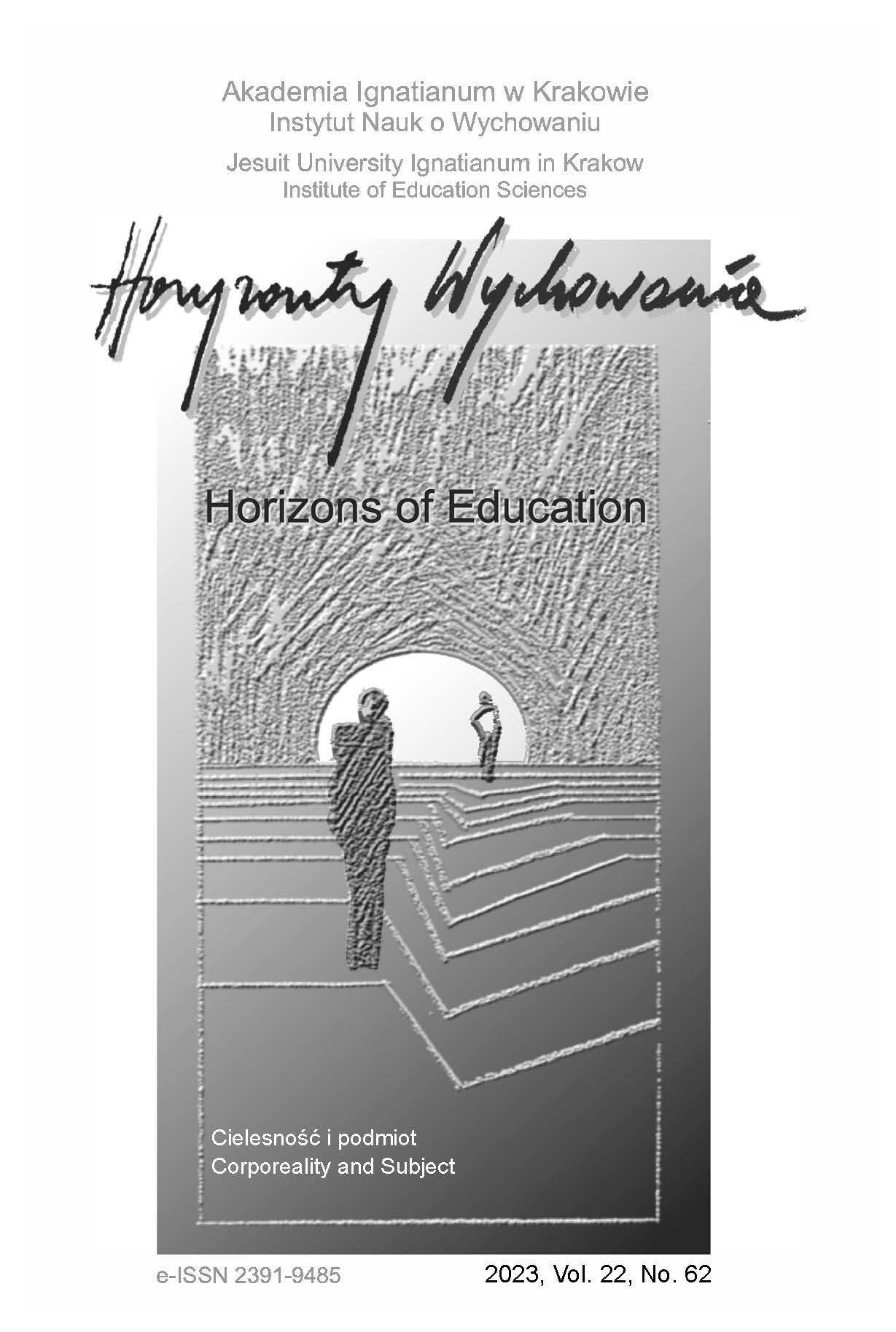Body Marked Biographically – Traces, Testimonies and Transgressions
Abstract
RESEARCH OBJECTIVE: The aim of the analyses undertaken in the article is to show how the transformations concerning the body, both resulting from the intentional actions of the subject and unintentional processes are inscribed in the biography of the individual.
THE RESEARCH PROBLEM AND METHODS: The most important research is as follows: in what situations related to the change within the body caused by a consciously made decision or random interference does the body becomes a tool of biographical memory and what kind of identity transformations does these processes?
THE PROCESS OF ARGUMENTATION: The body-spirit opposition, in relation to undertaken considerations doesn’t have sufficient justification. The body, which is an intimate space, is also a ‘product’ of culture. Actions leading to changes concerning the body (intentional) and processes resulting in its change (unintentional) also involve the subjectivity of the individual; in consequence, its identity is modified. These changes take place at various levels of depth, taking the form of traces, testimonies and transgressions.
RESEARCH RESULTS: In the context of undertaken the most important considerations regarding the biographical marking of the body seem to be those which are related to the trajectory made by the subject in connection with the circumstances in his biography. The trajectory, which is a longer process of coming to terms with change, often divides the biography of the subject into the period ‘before’ and ‘after’ the change. What change turns out to be in the broader biographical plan de- pends among the others on the level of agency and reflexivity of the subject.
CONCLUSIONS, INNOVATIONS AND RECOMMENDATIONS: The relationships between the transformations of the body and the identity of the subject can take the form of a trace, testimony, or transformation that leads to transgression.
References
Beck, U. (2002). Społeczeństwo ryzyka. W drodze do innej nowoczesności (S. Cieśla, tłum.). Wydawnictwo Naukowe Scholar.
Błajet, P. (2006). Ciało jako kategoria pedagogiczna. W poszukiwaniu integralnego modelu edukacji. Wydawnictwo Uniwersytetu Mikołaja Kopernika.
Chan, T.Ch. (b.d.). Goffman’s theory of stigmatisation and labelling: Consequences for health and illness. Academia. https://www.academia.edu/30491334/Goffmans_theory_of
Erikson, E.H. (2004). Tożsamość a cykl życia (M. Żywicki, tłum.). Wydawnictwo Zysk i S-ka.
Karkowska, M. i Skalski, T. (2010). Kultura, socjalizacja, tożsamość. Oficyna Wydawnicza Impuls.
Kos, E.A. (2017). Typy struktur doświadczeń porządkujących przebieg biografii. Wzbogacenie teorii F. Schütze na podstawie interpretacji narracji kobiet odnoszących sukcesy zawodowe. Edukacja Dorosłych, 2(77), 101-116.
Kozielecki, J. (1987). Koncepcja transgresyjna człowieka. Analiza psychologiczna. Państwowe Wydawnictwo Naukowe.
Krąpiec, M.A. (2000). Starzenie się – dojrzewaniem człowieka. Studia Philosophiae Christianae, 36(2), 107-111.
Kubiak-Jabłońska, D. (2014). Ciało jako kategoria pedagogiczna. Roczniki Pedagogiczne, 6(42)1, s. 69-85.
Leonarska, D. (2015). Koncepcja człowieka w teorii społecznej Margaret S. Archer. Uniwersyteckie Czasopismo Socjologiczne, 10, 122-129.
Melosik, Z. (1989). Ideał wychowania XXI wieku. Kwartalnik Pedagogiczny, 3, 144-161.
Schütze, F. (1997). Trajektorie cierpienia jako przedmiot badań socjologii interpretatywnej (M. Czyżewski, tłum.). Studia Socjologiczne, 1, 11-56.
Tischner, J. (1995), Dramat cielesności – krajobraz wstydu. Znak, 47(8)483, s. 76-87.
Trzebiński, J. (2001). Autonarracje nadają kształt życiu człowieka. W: J. Trzebiński (red.), Narracja jako sposób rozumienia świata (s. 149-163). Gdańskie Wydawnictwo Psychologiczne.
Copyright (c) 2023 HORIZONS OF EDUCATION

This work is licensed under a Creative Commons Attribution-NoDerivatives 4.0 International License.
Authors who publish in this journal agree to the following terms:
- Authors retain the copyright to their work while granting the journal the right of first publication. The work will be simultaneously licensed under a CC BY-ND license, which permits others to share the work with proper credit given to the author and the original publication in this journal.
- Authors may enter into additional, non-exclusive agreements for the distribution of the published version of the work (e.g., posting it in an institutional repository or publishing it in another journal), provided that the original publication in this journal is acknowledged.
We allow and encourage authors to share their work online (e.g., in institutional repositories or on personal websites) both before and during the submission process, as this can foster beneficial exchanges and lead to earlier and increased citations of the published work. (See The Effect of Open Access). We recommend using any of the following academic networking platforms:





